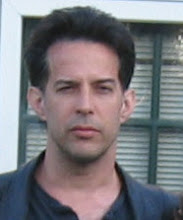Revised: Jan. 12th, 2007.
As some may know I’m a software engineer by day. I have come to believe that there are certain ideas in software engineering that are applicable to delivering product in the music world i.e. to compose and publish your music CD. One of those ideas is that of patterns ala Design Patterns. Simplistically, a pattern is a label on a repeatable strategy to do something. The label serves as a way of communicating an idea to somebody(s) , a collaborator or perhaps oneself . In the case of software its your team. In the case of music its your team as well. Your bandmates, your composition partner , even a teacher or student.
Often, you hear “well, there are a thousand ways to do that” and with art that goes up to a million ways. However, the case is that there is actually a limited number of commonly used and effective strategies. Often, the creativity comes in the extension or slight departure from a pattern. Of course, somebody can invent something entirely new. That’s okay, its great but often people don’t appreciate stuff that is too “new”.
From my perspective the main value of “music” patterns would be to foster communication between collaborators at all levels of expertise. To better allow one to get a grip on effective strategies and therefore enhance productivity.
All of the above to introduce:
The Layered Riff Intro
A riff is at first introduced over for example a 4 bar phrase. Every four bars another part is added e.g. percussion, bass, piano etc,. thereby “thickening” the sound until by the end of the fourth pass one enters the top of the A section. A twist to this pattern, which I like and I’m currently using on a tune, is to repeat the riff over your A section and to finally end the tune with the riff.
Note, the riff is not the melody but something that the melody plays against. The melody can contain parts of the riff, it can contain inversions of the riff, be rhythmically symmetrical to the riff, etc. I find it very cool to do that.
Let me emphasize in case there is any confusion, I have not “invented” anything. I’m just going through a process of labelling these patterns , strategies that I hear in the music I listen to for the purposes that it may help my personal composition process. If this perhaps helps others , great. I do doubt that a seasoned composer will find much value in these, such already know them may have even coined their own terms or not for these.
——
Now, some heavy composer types may call this “motif development” or something else, well fine. But this pattern is more specific. It is easy to grasp and more direct to implement. Try it out. The next time YOU, and I’m now talking to those that may not have heavy music education under their belts, set out to write a tune, just try it. Come up with a riff , layer in the rest of the parts, come up with a melody that is a play off the riff, come up with some chords that work and end the tune with the riff.
You may be surprised to find a decent initial cut of an “entire” tune. Often, at least with me, having a notion of what the “entire” structure of the tune is has been difficult and a roadblock to finishing a tune. I have a lot of unfinished tunes  . This pattern or if it is preferred “recipe” has been helpful.
. This pattern or if it is preferred “recipe” has been helpful.





2 comments:
The topic on applying design patterns to music making is one I have been chewing over lately. After trying to formulate some patterns for my personal use as to try the water, I found that music different genres maybe a culprit to why there hasn't been much work done on music making design patterns yet. In other words, genre differences pose as a big obstacle in generalization of solutions to music problems... Just musing.
I suspect that there are patterns that cut across genres and patterns that are specific to genres. However, I feel that it may be possible to formulate western music composition theory in the form of patterns.
Post a Comment